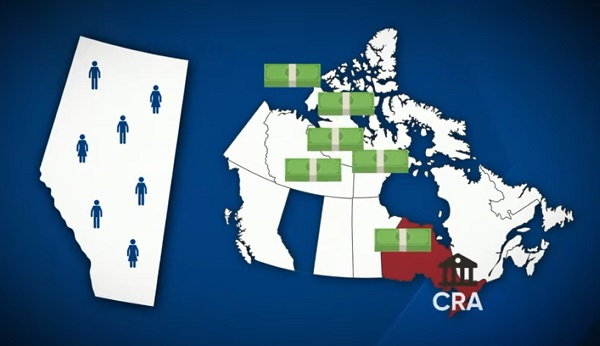Alberta
It’s Red Deer University!

From Red Deer College and Todayville
One year after learning that it would become a university, Red Deer College reached another major milestone today, when the Government of Alberta came to RDC to announce the institution’s new name of Red Deer University.
“A university’s name is not only about higher education and programs it offers, but it serves as a beacon of pride for the community it serves. I look forward to officially celebrating this new name following Red Deer College’s successful transition to become Alberta’s newest university,” says Marlin Schmidt, Minister of Advanced Education.
The historic naming announcement was the culmination of months of community consultations, research and visioning undertaken by RDC and external consultants, Will Creative and Stormy Lake Consulting. The extensive consultation process involved nearly 400 people from Red Deer, Ponoka, Stettler and Rocky Mountain House, and it was designed to help RDC learn exactly what the College means to those it serves.
“We heard from a wide range of people, and their feedback reinforced the intense pride people have both in Red Deer College and the community in which we live,” says Morris Flewwelling, Board of Governors Chair. “People have a strong emotional connection with this institution, and that was a factor we considered when reviewing name options. We need to be grounded in our significant history as we look ahead to all that Red Deer University will become.”
As part of the naming process, RDC staff and consultants looked at best practices for post-secondary naming from across three continents and reviewed nearly 100 workable options that could capture the future brand. Coupled with the community feedback, Red Deer University emerged as the outstanding option to capture the legacy of RDC and its future as a comprehensive regional teaching university.
“The name, Red Deer University, is a good starting point for us as we continue to develop our institutional identity. I appreciate that the name acknowledges the grassroots of what the university will stand on, which is the legacy built by Red Deer College, while also reflecting our expansion and commitment to post-secondary education,” says Esther Schilling, Vice President Academic with the Students’ Association of Red Deer College.
Red Deer University will continue to build on the 55-year history of the College, offering students a breadth of programming and credentials across Trades, certificates, diplomas and degrees. By offering innovative, practical and sought-after programs, the University will continue to provide the programs that students, businesses and industry partners identify as vital to the region, and this mirrors feedback from the recent community consultations.
“When community members told us what they wanted our University to become, they used words such as transformative, recognized and innovative. With the ongoing support from our community members and partners, we will forge a new path for our University that represents all of these elements,” says Joel Ward, President & CEO. “Looking ahead, we are Red Deer College, and we are Red Deer University. We’re committed to keeping what makes us great, as a College, as we become the University of our future.”
Alberta
Temporary Alberta grid limit unlikely to dampen data centre investment, analyst says
From the Canadian Energy Centre
By Cody Ciona
‘Alberta has never seen this level and volume of load connection requests’
Billions of investment in new data centres is still expected in Alberta despite the province’s electric system operator placing a temporary limit on new large-load grid connections, said Carson Kearl, lead data centre analyst for Enverus Intelligence Research.
Kearl cited NVIDIA CEO Jensen Huang’s estimate from earlier this year that building a one-gigawatt data centre costs between US$60 billion and US$80 billion.
That implies the Alberta Electric System Operator (AESO)’s 1.2 gigawatt temporary limit would still allow for up to C$130 billion of investment.
“It’s got the potential to be extremely impactful to the Alberta power sector and economy,” Kearl said.
Importantly, data centre operators can potentially get around the temporary limit by ‘bringing their own power’ rather than drawing electricity from the existing grid.
In Alberta’s deregulated electricity market – the only one in Canada – large energy consumers like data centres can build the power supply they need by entering project agreements directly with electricity producers.
According to the AESO, there are 30 proposed data centre projects across the province.
The total requested power load for these projects is more than 16 gigawatts, roughly four gigawatts more than Alberta’s demand record in January 2024 during a severe cold snap.
For comparison, Edmonton’s load is around 1.4 gigawatts, the AESO said.
“Alberta has never seen this level and volume of load connection requests,” CEO Aaron Engen said in a statement.
“Because connecting all large loads seeking access would impair grid reliability, we established a limit that preserves system integrity while enabling timely data centre development in Alberta.”
As data centre projects come to the province, so do jobs and other economic benefits.
“You have all of the construction staff associated; electricians, engineers, plumbers, and HVAC people for all the cooling tech that are continuously working on a multi-year time horizon. In the construction phase there’s a lot of spend, and that is just generally good for the ecosystem,” said Kearl.
Investment in local power infrastructure also has long-term job implications for maintenance and upgrades, he said.
“Alberta is a really exciting place when it comes to building data centers,” said Beacon AI CEO Josh Schertzer on a recent ARC Energy Ideas podcast.
“It has really great access to natural gas, it does have some excess grid capacity that can be used in the short term, it’s got a great workforce, and it’s very business-friendly.”
The unaltered reproduction of this content is free of charge with attribution to the Canadian Energy Centre.
Alberta
Alberta Next: Taxation

A new video from the Alberta Next panel looks at whether Alberta should stop relying on Ottawa to collect our provincial income taxes. Quebec already does it, and Alberta already collects corporate taxes directly. Doing the same for personal income taxes could mean better tax policy, thousands of new jobs, and less federal interference. But it would take time, cost money, and require building new systems from the ground up.
-

 Fraser Institute1 day ago
Fraser Institute1 day agoBefore Trudeau average annual immigration was 617,800. Under Trudeau number skyrocketted to 1.4 million annually
-

 MAiD1 day ago
MAiD1 day agoCanada’s euthanasia regime is already killing the disabled. It’s about to get worse
-

 Frontier Centre for Public Policy1 day ago
Frontier Centre for Public Policy1 day agoNew Book Warns The Decline In Marriage Comes At A High Cost
-

 Business1 day ago
Business1 day agoPrime minister can make good on campaign promise by reforming Canada Health Act
-

 Addictions1 day ago
Addictions1 day ago‘Over and over until they die’: Drug crisis pushes first responders to the brink
-

 International1 day ago
International1 day agoChicago suburb purchases childhood home of Pope Leo XIV
-

 Daily Caller1 day ago
Daily Caller1 day agoUSAID Quietly Sent Thousands Of Viruses To Chinese Military-Linked Biolab
-

 Business2 days ago
Business2 days ago103 Conflicts and Counting Unprecedented Ethics Web of Prime Minister Mark Carney



